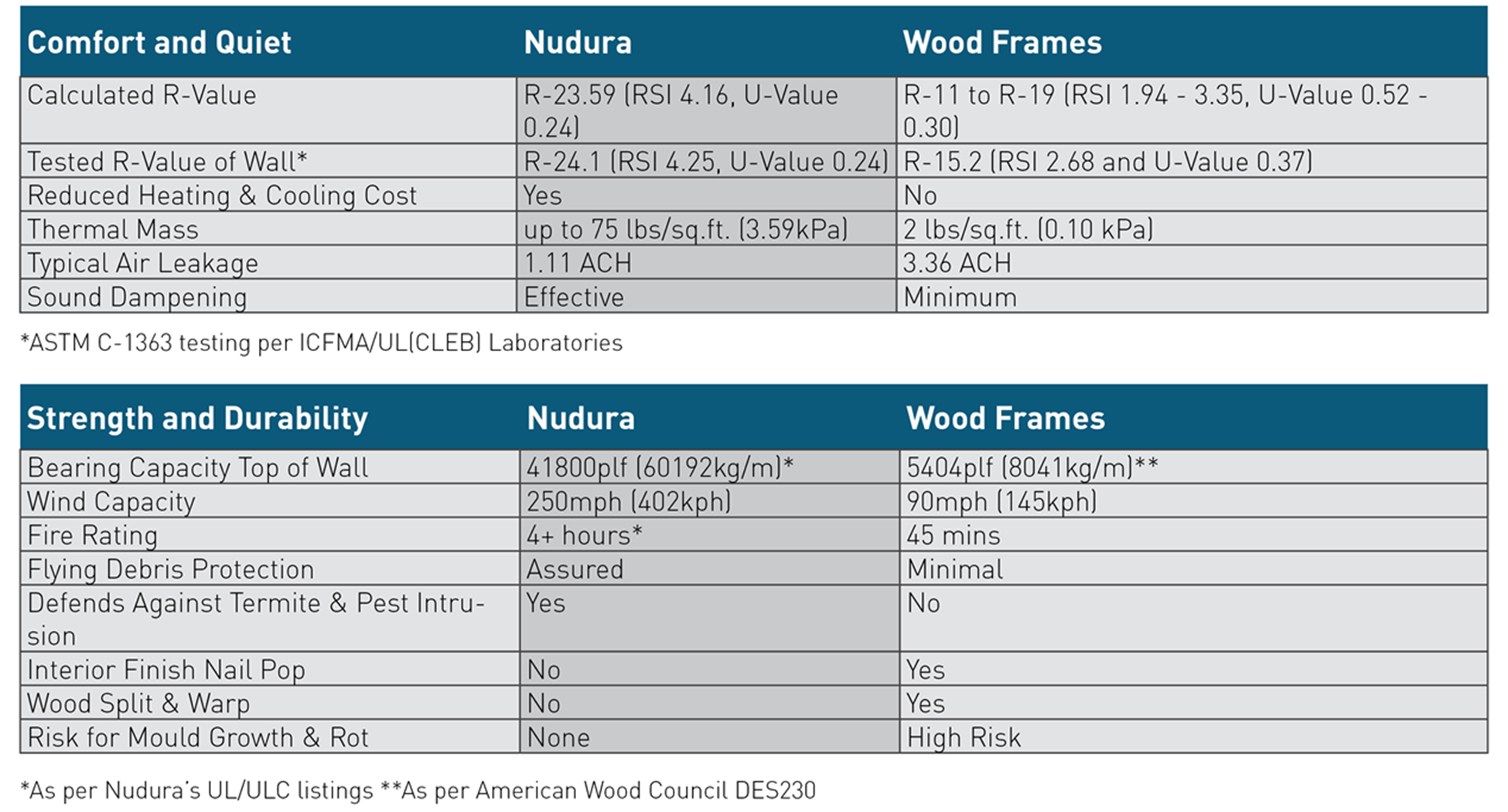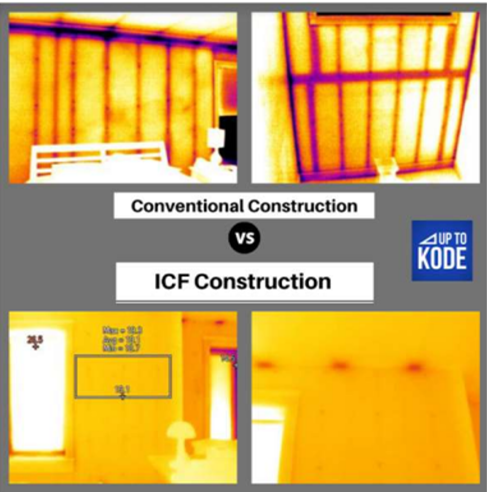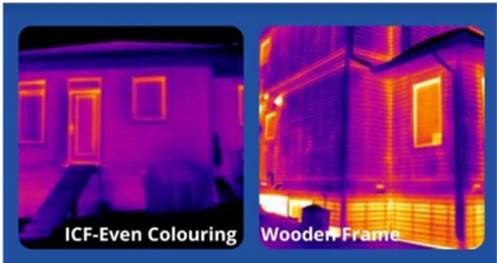
- Products
- Why Nudura
- Nudura Project Applications
- Training Academy
- Resources
- Company
If you’re building a new home, safety and comfort are typically the top priorities. From there, aesthetics, energy-efficiency, and cost are secondary factors. Therefore, it is critical that your architect and contractor are prioritizing building beyond code and utilizing materials that will ensure the longevity and durability of the structure in any and all weather conditions, making it “future-proof”.
For your exterior wall construction, Insulated Concrete Forms (ICFs) can give you this peace of mind and help meet all your safety, comfort, and energy objectives while staying within budget and achieving the curb appeal you desire.
Safety and Comfort
Whether you’re downsizing, expanding, or moving to a different city, constructing a new home is all about establishing and maintaining a good quality of life for you and your family. Constructing with ICFs is the first step towards this goal.
Once installed, ICFs create a wall of solid concrete with continuous insulation on both the interior and exterior of the building. The monolithic concrete core of the ICF walls are extremely strong and enables them to withstand winds up to 250 mph (402 kph). This extreme durability has led ICFs to be the go-to construction material to construct storm shelters and buildings in hurricane- and tornado- prone regions. Flying debris may cause minor defects to the outside foam of an ICF block, but it will not penetrate the concrete, keeping the structure stable and intact.
With the threat of fire, ICF walls are equipped with a 4+ hour fire rating, allowing occupants more time to get out safely. Wood-framed buildings, on the other hand, cannot compete, with a fire rating of only 45 minutes.
On top of the many safety features, ICFs also provide enhanced comfort through the sound dampening quality of the dual foam insulation. When building near highways, airports, or other loud areas, ICFs are a perfect fit to block out any outside noise.
No matter what the environment throws at you in the years to come, with ICF construction, you can feel confident that your home and everyone inside will be protected.
Energy Efficiency
Besides the environmental benefits of having an energy-efficient home, structures that conserve energy are more cost-effective to heat in the winter and cool in the summer. Savings on monthly utility bills can add up significantly over the years, especially as climate change and price escalation become a greater concern.
To measure insulation, which directly impacts energy-efficiency, building materials are assigned an R-value that dictates how well they can resist heat flow, keeping outside temperatures out and inside temperatures in. Thermal mass is another measurement which determines the material’s ability to store heat and reduce temperature fluctuations.
ICFs concrete core with two layers of insulation provide extremely high R-values and thermal mass, leading to greater energy-efficiency than both wood and steel framed buildings. While values will differ depending on the thickness of insulation chosen, ICF walls can offer a calculated R-value of 23.59, compared to wood framing, which ranges from R-11 to R-19. Walls constructed with ICFs can have a thermal mass up to 75 lbs/sq. ft. (3.59 kPa) with wood framed walls only achieving 2 lbs/sq. ft. (0.10 kPa).

In many climates, especially those that experience large temperature fluctuations, traditional building materials struggle to maintain consistent indoor temperatures which can cause heating and cooling costs to skyrocket. These building materials can also fall victim to air leakage and thermal bridging, meaning that the air that you’ve paid to be cooled or heated is literally escaping out of your home. However, when building with ICFs, the concrete core and continuous insulation throughout the building envelope mean there are fewer areas for leaks to occur.


Aesthetics
Looking at the outside of your home, ICF structures can be designed with the same window and door configurations of a traditional wood-frame building. Plus, virtually any cladding or façade can be installed, from brick to stone to siding. Therefore, ICF homes offer any look that you could get from a traditional wood frame construction with the added resiliency and energy-efficiency to last for generations.
Conclusion
Building a home that goes beyond traditional wood-framing and the minimum building codes will make a difference in your every-day life. It ensures that when you need it most, your home will protect you, your valuables, and loved ones. In addition, ICF construction offers unparalleled energy-efficiency to reduce your carbon footprint and offer life-long financial savings from decreased heating and cooling usage.
CONTACT US
We’re committed to supporting homeowners and design professionals who are interested in or use our products. We’re always happy to help and provide more information.




